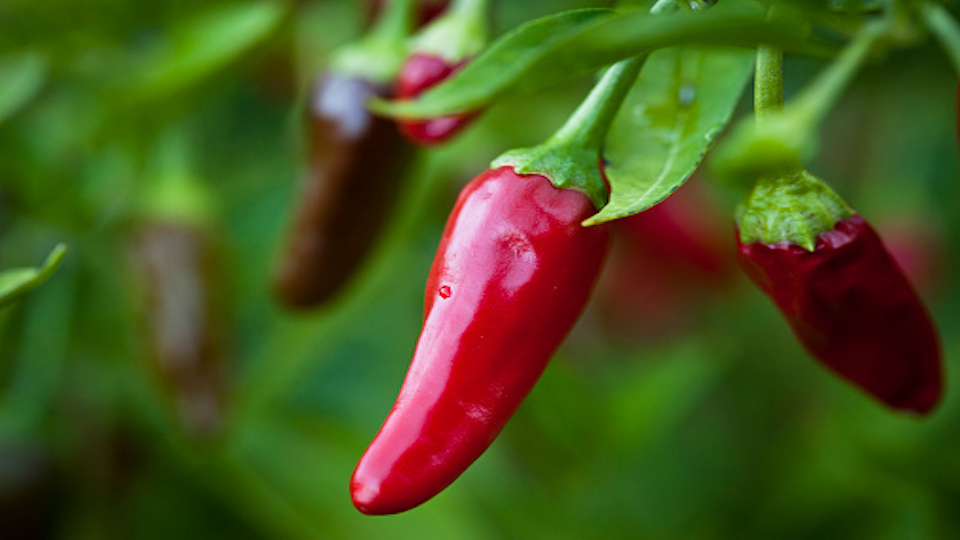Peppers are a bright and cheery addition to any garden space. They are also easy and rewarding to grow. Probably because they never fail to give you at least something to show for your effort, if not a large crop. And a few peppers go a long way, especially the hot ones.
Hot or sweet, peppers do equally well in pots as well as in beds and are quite at home among your ornamentals as in your vegetable patch. A sunny spot, well-draining soil, and regular watering are all they need by way of cultural requirements.
Here’s a selection of popular pepper varieties for your home garden.
Hot peppers
Anaheim 70-90 days
Mildly hot, thick-walled red chili, widely grown and popular. Good for canning and frying.
Red Cayenne’ 60-80 days
This thin, long cayenne pepper variety is moderately hot with a fruity flavor. It can be eaten raw in salads or used in cooking. Good for making sauces and easily dried to make chili powder.
Hungarian Yellow Wax 60-80 days
Medium hot, waxy yellow chili with medium thick wall, turning red on ripening. Continuous bearer and good for cool regions.
Jalapeño 65-80 days
Very hot, short and thick, deep green colored pepper, commonly used in Mexican dishes.
Serrano Chili Pepper 75-90 days
Small, thin-walled green chili that packs three times the punch of Jalapeño peppers. Vigorous growth and high productivity. Ideal for making Tabasco-like hot sauces.
Sweet Bell pepper varieties
Early Pimento 60 days
Early maturing heavy yielder, excellent raw or pickled. Disease resistant hybrid.
California Wonder 65-85 days
Sweet, juicy, thick-walled green pepper is completely devoid of heat.
Corno di Toro (Yellow Bull’s Horn) 68-70 days
Thick and long, slightly spicy and not overly sweet. Good for stuffing and grilling.
Sweet Banana 70 days
Thick, long, and cylindrical pepper in light yellow color, with a sweet and mild taste. Prolific bearer.
Tips for growing peppers
Peppers are warm weather plants native to South and Central America, so you need to always keep this in mind.
Start early
Pepper seeds need warmth to germinate, and the seedlings can only go outside when all danger of frost has passed and the bed is sufficiently warm. Hot pepper varieties need 150 to 180 days from the time the seedlings are transplanted into the beds. If you’re starting them from seeds, sow them in seed trays 8-10 weeks ahead of the planting date so that you get good sized seedlings to start with. Sweet peppers mature earlier, so it may be possible to start them later or even sow them directly in garden beds.
Choose a sunny location
Pepper plants in full sun mature faster and start producing earlier and yield much more than those in semi-shade.
Water regularly, feed sparingly
Pepper plants don’t need a lot of water, but they have to be watered regularly, especially during the rapid growth stage. Wilting makes them prone to diseases and triggers premature flowering, which reduces yield.
Avoid over-fertilizing
Avoid over-fertilizing pepper plants as this leads to excessive vegetative growth at the expense of flowering and fruit set.
Pinch tips to induce branching
Pinch off the tender growing tip of the main stem just above the sixth node to trigger the growth of lateral buds. When the lateral branches are about 6 inches long, pinch their tips, too, to make a bushier plant. The flowers crowd near the growing tips of branches, so it’s good to have a lot of them.
Provide warmth
Peppers keep producing all through the summer and beyond if they’re kept warm. If you have a short growing season, it’s better to grow them in pots so that you can move them to a warm sheltered area when the nights become cold. You can even treat pepper plants as a perennial and overwinter them indoors in a warm, brightly lit area. It’d save you the time and effort of making new seedlings the following season.
Are you ready to plant your pepper garden?
-Susan Patterson




